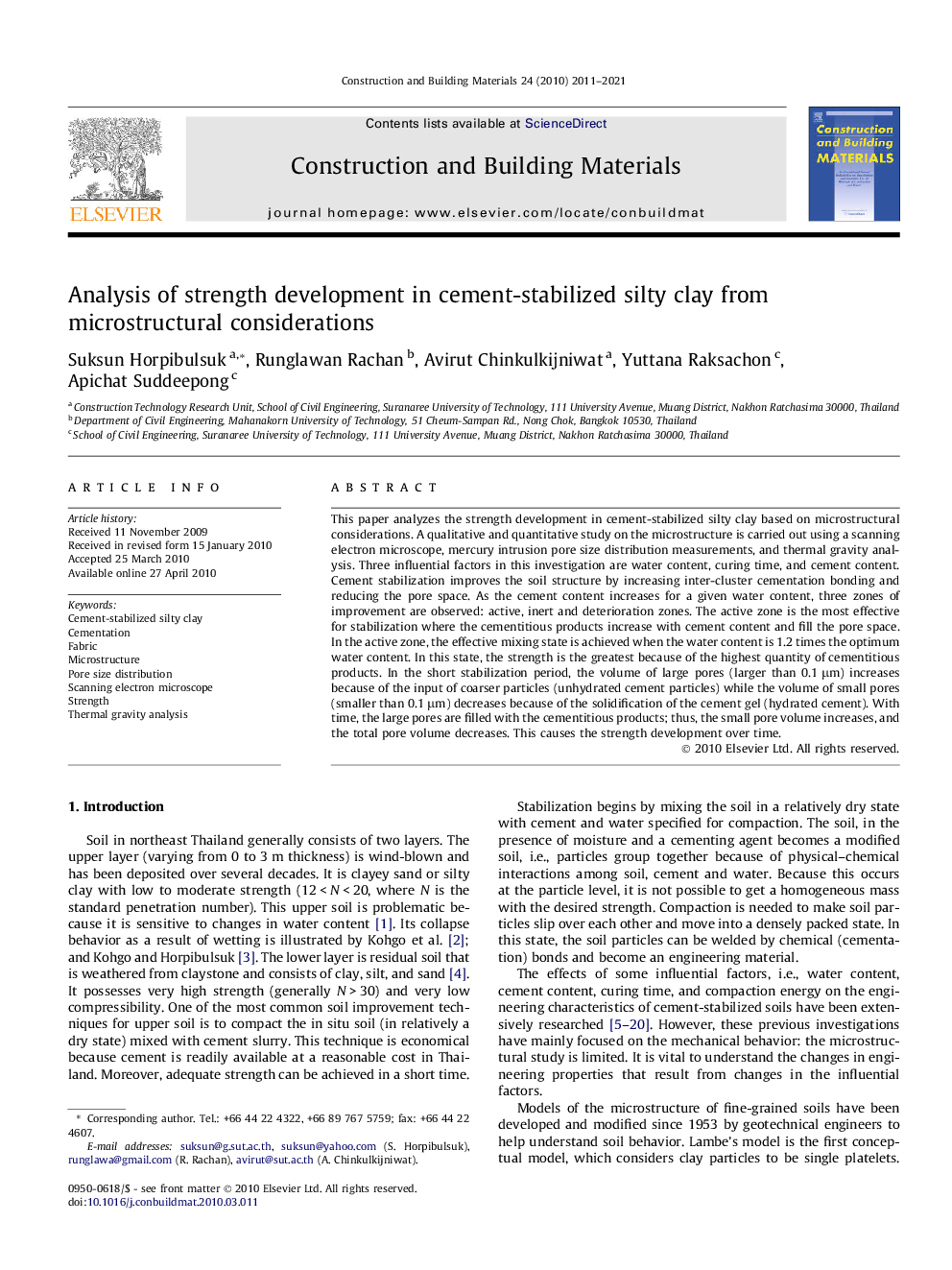| کد مقاله | کد نشریه | سال انتشار | مقاله انگلیسی | نسخه تمام متن |
|---|---|---|---|---|
| 260388 | 503658 | 2011 | 11 صفحه PDF | دانلود رایگان |

This paper analyzes the strength development in cement-stabilized silty clay based on microstructural considerations. A qualitative and quantitative study on the microstructure is carried out using a scanning electron microscope, mercury intrusion pore size distribution measurements, and thermal gravity analysis. Three influential factors in this investigation are water content, curing time, and cement content. Cement stabilization improves the soil structure by increasing inter-cluster cementation bonding and reducing the pore space. As the cement content increases for a given water content, three zones of improvement are observed: active, inert and deterioration zones. The active zone is the most effective for stabilization where the cementitious products increase with cement content and fill the pore space. In the active zone, the effective mixing state is achieved when the water content is 1.2 times the optimum water content. In this state, the strength is the greatest because of the highest quantity of cementitious products. In the short stabilization period, the volume of large pores (larger than 0.1 μm) increases because of the input of coarser particles (unhydrated cement particles) while the volume of small pores (smaller than 0.1 μm) decreases because of the solidification of the cement gel (hydrated cement). With time, the large pores are filled with the cementitious products; thus, the small pore volume increases, and the total pore volume decreases. This causes the strength development over time.
Journal: Construction and Building Materials - Volume 24, Issue 10, October 2010, Pages 2011–2021